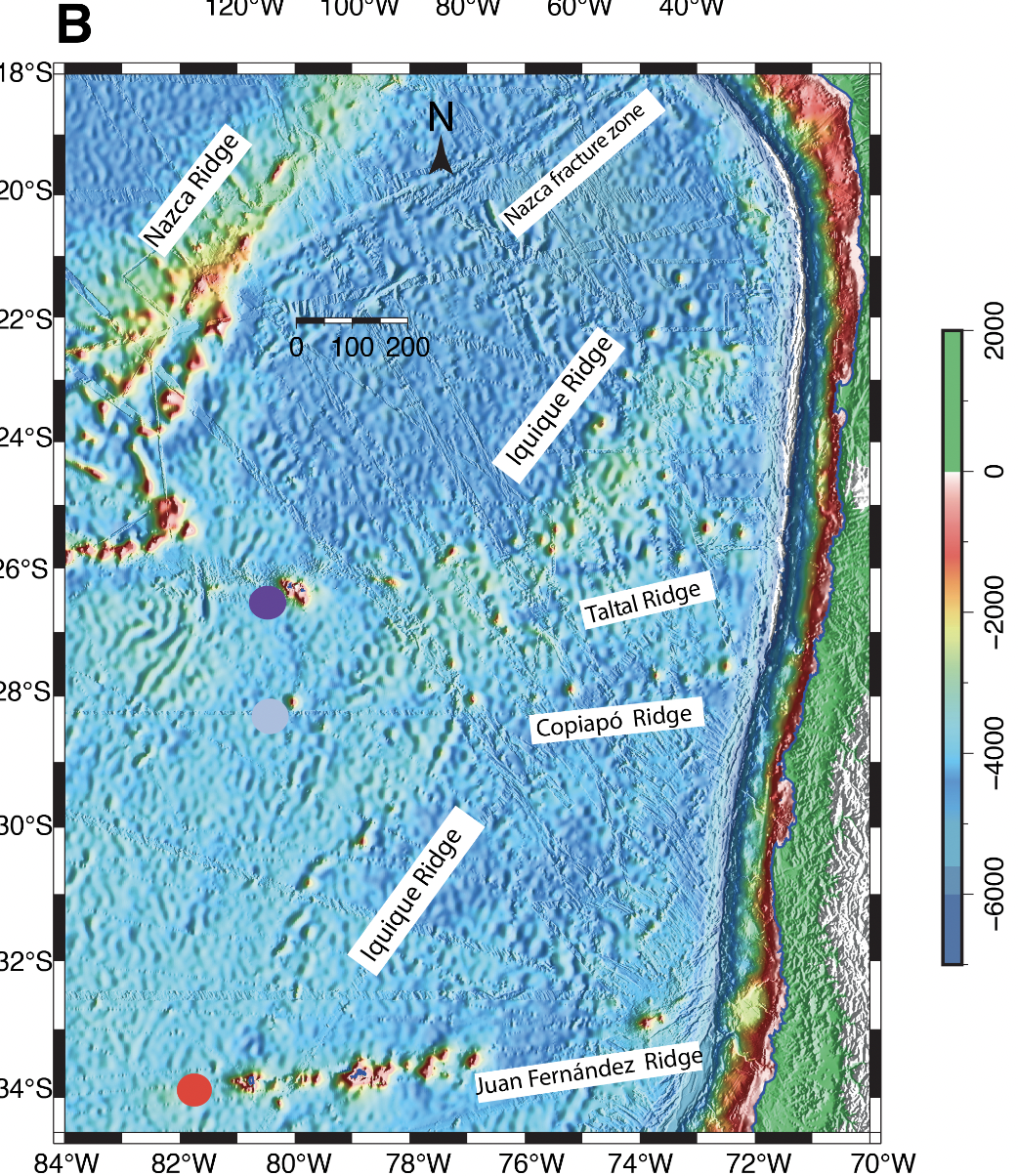Autor Ckelar: Andrei Maksymowicz y Luis E. Lara
Otros autores: Eduardo Contreras-Reyes
Revista científica: Geosphere
ABSTRACT
Based on gravity and bathymetric data and using a novel two-dimensional joint flexural-density modeling approach, this work studies the physical properties of the oceanic Nazca plate around the Taltal, Copiapó, and Iquique hotspot ridges offshore northern Chile. The area is located westward of the Chilean Trench where the Taltal and Copiapó Ridges collide with the continental margin. The results show that the variability in density structure at different scales is a key factor in explaining the observed gravity signal, playing an important role in the lithospheric flexure and hence the elastic properties of the Nazca plate in this setting. The results can be interpreted as evidence of spatial and temporal heterogeneities in the plate-weakening process at the hotspots, magmatic underplating, and crustal and upper mantle fracturing and/or hydration. These processes might be relevant for the ascent of magma pathways of later (secondary) volcanism and influence the mechanical segmentation of the oceanic plate. The latter is critical in explaining the active seismogenic contact between the oceanic Nazca and overriding South America plates.
Full paper here.

